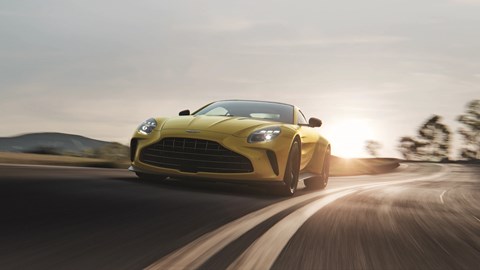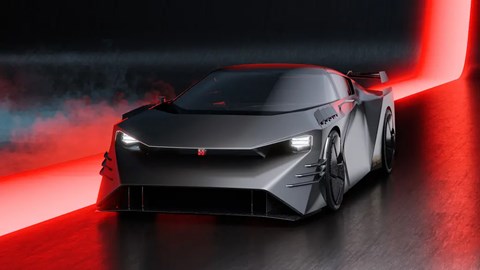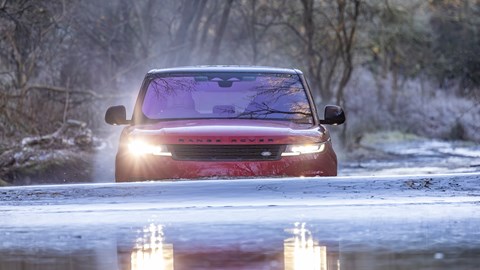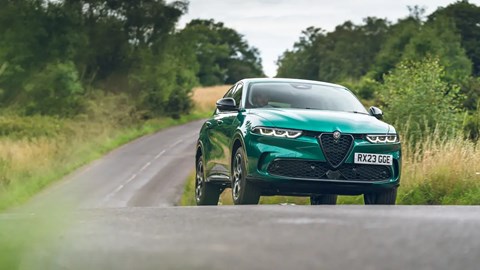► Some of the letters from June 2024
► From hybrid economy and adventure
► To Elon Musk
Just a few letters from the never-ending conversation around CAR and cars. Taken from the June 2024 issue mailbag of CAR magazine. Do you agree or disagree? Have your say:
VIA EMAIL CAR@bauermedia.co.uk
VIA TWITTER @CARmagazine
VIA FACEBOOK facebook.com/CARmagazine
VIA POST CAR, Media House, Lynch Wood, Peterborough, PE2 6EA

Right sizing – letter of the month
Supercars have become irrelevant. I mean, was the 510bhp Aston Martin Vantage V8 so short of power that its successor needs 658bhp? To enjoy these cars on a B-road no longer risks points but prison. The performance is insane.
After a string of Astons and a McLaren, I concluded that anything costing over £70k was just too fast for the road, and I have no inten- tion of trashing a £100k purchase on a track. I even test-drove a £5k 2002 Toyota MR2 to see if time had gilded my memory. It had. Although wonderful, 138bhp is just not enough.
So after discovering I am not agile enough to exit an Elise or Exige, I settled on a Porsche Boxster – not the latest four-cylinder, though, I went for a 2013 six-cylinder 310bhp 3.4-litre with PDK. For around £30k, the howling mid-engined convertible is perfect for the summer months and more fun than the now irrelevant 911.
I remember CAR questioning a decade ago where sports car development was heading. Well, I think we’ve finally got there – Top Trumps rather than motoring enjoyment. What are the manufacturers thinking?
Paul Tallett

He’s been Stango’d
Most enjoyable story in your April issue about Ford racing the Mustang at Daytona. Entertaining words, evocative images. However, I do find myself thinking that Ford is acting strangely, on two fronts. One, in thinking that now is a good time to be stinking up the atmosphere with combustion race cars, while it’s trying to divert customers to EVs. Two, in banging on about the Mustang being the world’s best-selling sports car. It’s alright, but it’s not a sports car by any rational definition, any more than the Tesla Model Y is a 4×4.
Bob McGuinness

Read the manual
I absolutely love and need manual transmissions in my performance cars – the control, connection, and humiliation at errors make the driving real.
My current money pit is a 2004 Pontiac GTO, six-speed crunch ’box, on its third LS-based engine. Really, it’s a Holden Monaro with a new face and left-side controls.
I got to drive a club member’s Nissan GT-R – a car that some think is in the same spirit. Brilliant, crunchy, abrupt and scary limits. But paddleshift leaves me cold, and the ‘just drive around’ setting was harsh and coarse. I think an electric Godzilla, as recently previewed by Nissan, will be even less engaging, no matter the outright performance. Maybe I’m getting old.
All good things must come to an end, but manual transmissions are great things, yes?
Ryan Corman
Slow down, Mark
Mark Walton has excelled himself in his March column with such a large number of ways to describe being sick because of the uncontrollable acceleration of EVs. Having had three EVs to date and not experi- enced such problems, might I suggest he tries keeping his heel on the floor while pressing the accelerator? If he is long of body and short of leg, as some of us are, perhaps he should put his thesaurus on the floor and rest his heel on it. That might prove more useful than discovering 27 ways to describe being sick.
Peter Smith

Worth it?
I always start my read with Our Cars. Not sure why. £83,620: graunchy door-handle motors. £43,750: bland plug-in hybrid performance. £51,595: feels a bit cheap in places. £69,265: can be tricky to get into. £58,330: characterless to own. £54,357: exterior is very safe. £107,080: not much feel, options make it expensive. £73,350: one way or another, Lexus infotainment is still not great. £78,895: bland styling, complex user interface, quality. £103,310: but it doesn’t go far on a charge.
That’s Range Rover, Vauxhall, Alfa, Volkswagen, Volkswagen, Mazda, BMW, Lexus, Genesis, Audi Mostly premium brands, not recent start-ups. Average price £72,255. Words escape me.
Steve Middleton
It takes a village
As a long-term subscriber I thought I should contact you about something that has bothered me for some time and your latest edition has reminded me of it again. Once more you mention Elon and Tesla as though he is behind everything that Tesla does, and yet I understand two other people started the company then ‘Elon’ came along and put money in. I recently read he only owns 12 per cent of the company. Doesn’t this mean his involvement is minimal?
Keep up the good work in maintaining a good balance between combustion and electric.
Colin Owen
Not quite right – Musk’s the biggest single shareholder. But yes, he didn’t found the company, and plenty of other people have contributed to its success. Even so, he kind of is Tesla. CO
Van go
I found your recent Giant Test of vans illuminating and thought-provoking. But surely the reality is that anyone who’s seriously intending to spend their own money on a van for family/leisure/cycling/fun use will buy a second- or third-hand one, not a shiny showroom-fresh specimen.
No point in getting one and then being afraid to sling a muddy bike in the back of it, fretting about the depreciation.
Alan Parr

Careful with that axis
I’ve worked in automotive engineering for 40-plus years, including with responsibility for integrating sensors for crash and chassis dynamics, but I’ve never heard the terms ‘surge, heave and sway’ used (In the Spotlight, April, Aston Martin Vantage)! I think you may be referring to a 6DoF (degrees of freedom) sensor which measures translation (acceleration) and rotation (angular velocity) in three axes, X,Y and Z.
Chris Kavanagh
Surge, heave and sway are the terminology Aston uses to describe some of the movements measured by its 6D-IMU. I suspect it’s just Aston’s choice of words throwing us. JD
It’s over
We keep reading about all the latest driver-assistance tech. All very clever, such as Merc’s auto lane-changer. My worry is that eventually the tech does everything and we don’t ‘drive’ any more, more like just ordering a taxi. No need for any more motoring magazines, no more driving fun. In fact the death knell of something that has been fundamental to skill and joy for over 120 years. Very sad!
Anthony Sketcher

Blame the victim
As the idea of Our Cars is to give the reader an insight into how various models perform in real-life scenarios, I think two reports in April indicate that you may have allocated the cars to the wrong drivers; either that or the manufacturers’ consumption figures are spectacularly incorrect. The Astra GSE has an official consumption of 256mpg but is only achieving 39.6mpg, while the Tonale is even worse with a tested figure of 23.9mpg against an official 217mpg. Does this mean that the drivers do not have access to chargers, in which case there is little point in them having a PHEV and we do not know what the cars are realistically capable of? However, you do seem to have got it right with the Lexus RX 450h which is returning 108.8mpg against the manufacturer’s figure of 256.8.
Jeff Simpson
Even though charged regularly, longer journeys meant the Astra and Tonale got relatively little help from the battery. The WLTP PHEV formula is wholly inadequate. CO
Brochure bro
It may be fair to say that I’m like the dinosaur and out of step with the eco warriors of today, but I do miss car brochures. I used to find them really useful when looking for a new car as you could easily understand the spec of each model and compare between different manufacturers and specific ranges. Nowadays you have to have the patience of a saint and a photographic memory to trawl through the individual websites, each laid out in the different, idiosyncratic ways of the web designers, to identify the in- formation that you are looking for and then make comparisons.
Yes, it saves paper (and cost), but that paper could be recycled. Bringing back brochures would certainly make life easier for the customer. At the very least, let’s have more uniformity and clarity to the website designs – for example, each has a printable list of features laid out to a standard design. That would actually save money for the manufacturers and improve customer satisfaction.
Simon Stocks